
The 1972 United States presidential election was the 47th quadrennial presidential election. It was held on Tuesday, November 7, 1972. Incumbent Republican President Richard Nixon defeated Democratic Senator George McGovern of South Dakota.

The 1984 United States presidential election was the 50th quadrennial presidential election. It was held on Tuesday, November 6, 1984. Incumbent Republican President Ronald Reagan defeated former Vice President Walter Mondale, the Democratic candidate.

Walter Frederick "Fritz" Mondale is an American politician, diplomat and lawyer who served as the 42nd vice president of the United States from 1977 to 1981. A United States senator from Minnesota (1964–1976), he was the Democratic Party's nominee in the United States presidential election of 1984, but lost to Ronald Reagan in an Electoral College landslide. Reagan won 49 states while Mondale carried his home state of Minnesota and District of Columbia. He became the oldest-living former U.S. vice president after the death of George H. W. Bush in 2018.
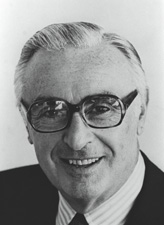
Abraham Alexander Ribicoff was an American Democratic Party politician. He served in the United States Congress, as the 80th Governor of Connecticut and as President John F. Kennedy's Secretary of Health, Education, and Welfare. He was Connecticut's first and to date only Jewish governor.
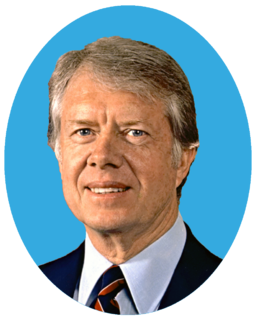
The 1980 National Convention of the U.S. Democratic Party nominated President Jimmy Carter and Vice President Walter Mondale for reelection. The convention was held in Madison Square Garden in New York City from August 11 to August 14, 1980.

The 1984 Democratic presidential primaries were the selection process by which voters of the Democratic Party chose its nominee for President of the United States in the 1984 U.S. presidential election. Former Vice President Walter Mondale was selected as the nominee through a series of primary elections and caucuses culminating in the 1984 Democratic National Convention held from July 16 to July 19, 1984, in San Francisco, California.
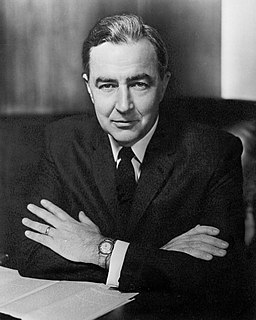
The 1968 Democratic presidential primaries were the selection process by which voters of the Democratic Party chose its nominee for President of the United States in the 1968 U.S. presidential election. Incumbent Vice President Hubert Humphrey was selected as the nominee in the 1968 Democratic National Convention held from August 26 to August 29, 1968, in Chicago, Illinois.
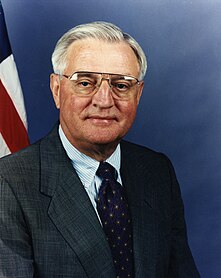
Electoral history of Walter Mondale, 42nd Vice President of the United States (1977–1981); United States Senator (1964–1976) from Minnesota and 23rd Attorney General of Minnesota (1960–1964).

George McGovern, a Democratic Party politician from South Dakota, was first elected to the United States House of Representatives to represent South Dakota's 1st congressional district in 1956. He was re-elected in 1958, before making an unsuccessful run for the United States Senate in 1960 against Republican incumbent Karl Earl Mundt. After serving in the John F. Kennedy administration as director of the Food for Peace program, McGovern ran again for the Senate and narrowly prevailed over appointed Senator Joseph H. Bottum. In 1968, McGovern unsuccessfully sought the Democratic Party's presidential nomination at the Democratic National Convention and was re-elected to the Senate over former Governor of South Dakota Archie M. Gubbrud. In 1972, McGovern was successful in his campaign for the Democratic presidential nomination, but lost the election in a landslide to incumbent President Richard Nixon. McGovern was re-elected to the Senate in 1974 over Vietnam War veteran Leo K. Thorsness, but lost re-election in 1980 to then-U.S. Representative James Abdnor. McGovern made a final unsuccessful run for president in United States presidential election, 1984.
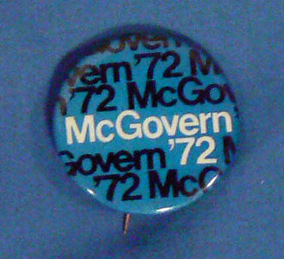
The George McGovern presidential campaign of 1972 began when United States Senator George McGovern from South Dakota launched his second candidacy for the Presidency of the United States in an ultimately unsuccessful bid to win the 1972 presidential election, winning only in the District of Columbia and the state of Massachusetts. McGovern vied to become the first South Dakota native to become president.
Since 1983, the Democratic Party of the United States holds a few debates between candidates for the Democratic nomination in presidential elections during the primary election season. Unlike debates between party-nominated candidates, which have been organized by the bi-partisan Commission on Presidential Debates since 1988, debates between candidates for party nomination are organized by mass media outlets.

This article lists those who were potential candidates for the Democratic nomination for Vice President of the United States in the 1976 election. Former Georgia Governor Jimmy Carter won the 1976 Democratic nomination for President of the United States, and chose Minnesota Senator Walter Mondale as his running mate. According to Joel Goldstein, a legal professor and the author of several works on the vice presidency, 1976 marked the beginning of the modern vice presidential selection process, with candidates undergoing extensive vetting. Carter thought that the vice president could be an important asset for a president, and Mondale became a major part of Carter's campaign. The choice of Mondale helped Carter, a Southern "outsider" with little experience in Washington, rally the Democratic base to his candidacy. The Carter-Mondale ticket defeated the Ford-Dole ticket in the 1976 election.
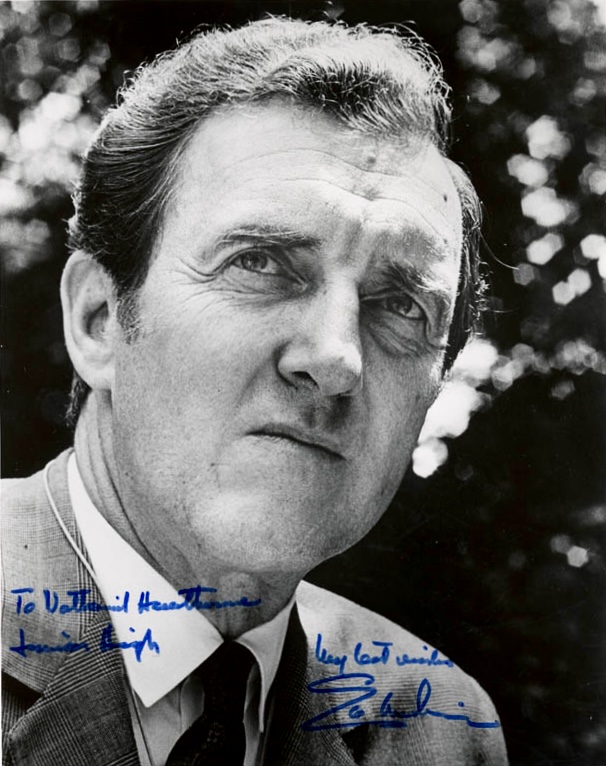
This article lists those who were potential candidates for the Democratic nomination for Vice President of the United States in the 1968 election. After winning the Democratic presidential nomination at the 1968 Democratic National Convention, incumbent Vice President Hubert Humphrey asked the convention to nominate Maine Senator Edmund Muskie as his running mate. The convention overwhelmingly voted to ratify the choice of Muskie, though Julian Bond picked up a scattering of votes. Muskie was surprised by the selection, as he was from a Northeastern state with few electoral votes. Humphrey almost chose Oklahoma Senator Fred R. Harris, but Humphrey decided that Muskie's age, governmental experience, and quiet temperament made him the better candidate. The Humphrey-Muskie ticket ultimately lost to the Nixon-Agnew ticket in the 1968 election. Muskie's place on the national ticket helped make him an early front-runner for the 1972 Democratic presidential nomination, though Muskie ultimately dropped out of the contest.
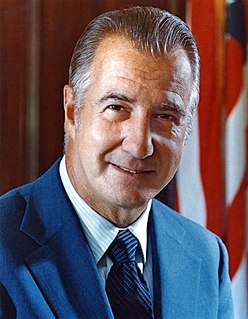
This article lists those who were potential candidates for the Republican nomination for Vice President of the United States in the 1968 election. After winning the Republican presidential nomination at the 1968 Republican National Convention, former Vice President Richard Nixon convened a series of meetings with close advisers and party leaders such as Strom Thurmond in order to choose his running mate. Nixon ultimately asked the convention to nominate Maryland Governor Spiro Agnew as his running mate. By a large margin, Agnew won the vice presidential nomination on the first ballot over Michigan Governor George W. Romney, who was supported by a faction of liberal Republicans. Nixon chose Agnew because he wanted a centrist who was broadly acceptable to the party, had experience with domestic issues, and appealed to Southern voters. The Nixon-Agnew ticket defeated the Humphrey-Muskie ticket, and also won re-election in 1972, defeating the McGovern-Shriver ticket. However, Agnew was forced to resign as Vice President in 1973 due to a controversy regarding his personal taxes.

This article lists those who were potential candidates for the Democratic nomination for Vice President of the United States in the 1964 election. After the assassination of Democratic President John F. Kennedy in 1963, Vice President Lyndon B. Johnson ascended to the presidency. As the 25th Amendment had not yet been passed, there was no process for filling the office of vice president until the next election, and Speaker of the House John William McCormack was next-in-line for the presidency from November 1963 to January 1965. Johnson carefully considered his running mate for the 1964 election, and put up "trial balloons" in the media about possible running mates. Among those speculated at the time were Connecticut Senators Abraham Ribicoff and Thomas J. Dodd, Secretary of Defense Robert McNamara, New York Mayor Robert Wagner, California Governor Pat Brown, and Minnesota Senators Hubert Humphrey and Eugene McCarthy. Many Democrats also hoped for Attorney General Robert F. Kennedy, the brother of former President John F. Kennedy, but Johnson carefully maneuvered to keep Kennedy off the ticket due to personal enmity between the two. After an interview in the Oval Office, Johnson announced his choice of Humphrey, who provided geographic balance to the ticket and had been a key lieutenant for Johnson in the Senate, particularly in regards to the 1964 Civil Rights Act. Humphrey then easily won the vice presidential nomination on the first ballot at the 1964 Democratic National Convention. The Johnson-Humphrey ticket went on to beat the Goldwater-Miller ticket in the 1964 election. Humphrey later won the 1968 Democratic presidential nomination over McCarthy, but lost the election to Richard Nixon.
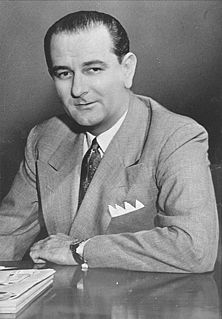
This article lists those who were potential candidates for the Democratic nomination for Vice President of the United States in the 1960 election. After winning the presidential nomination on the first ballot of the 1960 Democratic National Convention, Massachusetts Senator John F. Kennedy turned his attention to picking a running mate. Kennedy chose Senate Majority Leader Lyndon B. Johnson, who had finished second on the presidential ballot, as his running mate. Johnson, a Protestant Texan, provided geographical and religious balance to a ticket led by a Catholic Northeasterner, but many liberals did not like the pick. Many were surprised both that Kennedy made the offer and that Johnson accepted the offer, as the two had been rivals for the 1960 presidential nomination. According to some accounts, Kennedy had offered the position to Johnson as a courtesy and expected Johnson to decline the offer; when Johnson accepted, Kennedy sent his brother, Robert F. Kennedy, to talk Johnson out of accepting the offer. However, Kennedy may have made the offer in earnest due to Johnson's appeal in the south, Johnson's friendly relationship with Speaker of the House Sam Rayburn, and Kennedy's desire to remove Johnson as Senate Majority Leader in favor of the more liberal Mike Mansfield. Regardless, Johnson decided that accepting the offer would be better for his political career and better position himself to become president, and so he chose to become Kennedy's running mate. The Democratic convention confirmed Johnson as the vice presidential nominee, although the delegation from Washington, D.C. attempted to select Minnesota Governor Orville Freeman instead.



















